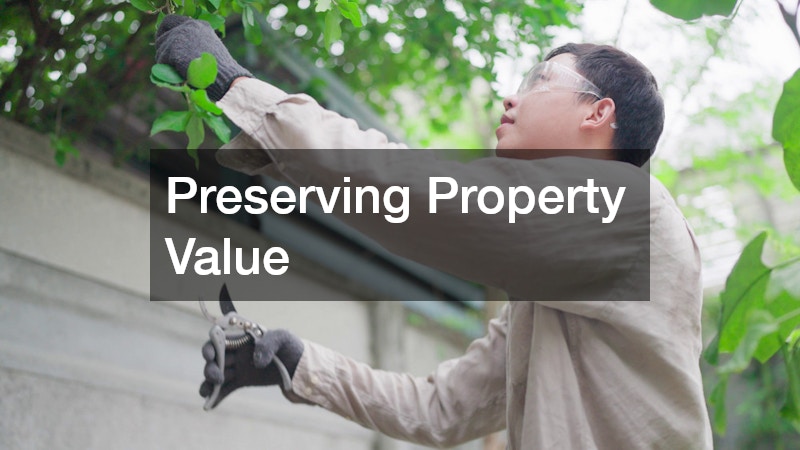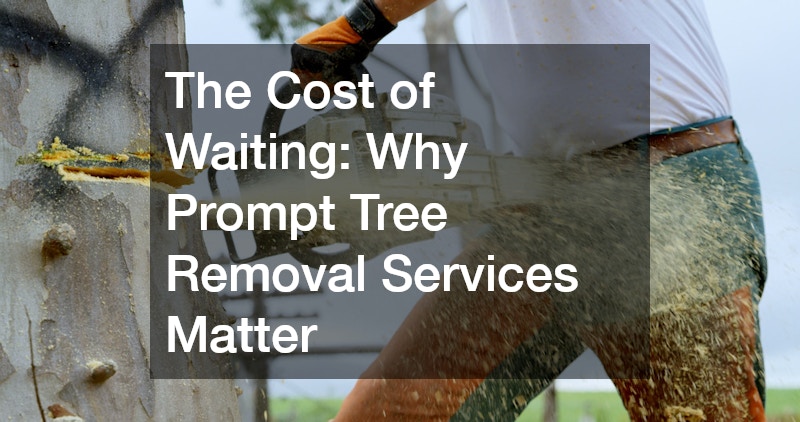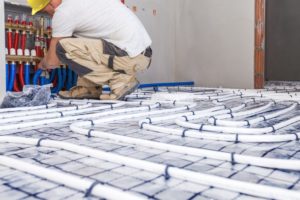Understanding the importance of immediate action when dealing with potential hazards posed by trees is crucial. Trees, though invaluable to ecological balance, can pose significant risks when they become unstable or diseased. This article explores the various costs and risks associated with delaying tree removal services and why acting promptly is essential.
Safety Hazards
Unstable or diseased trees present looming safety threats that could affect both people and property. For instance, a weak tree is more susceptible to falling during a storm, potentially causing injuries or fatalities.
The longer the delay in addressing such hazards, the greater the risk of catastrophic events.
Moreover, overlooked diseased trees often conceal internal decay, making them unpredictable during strong winds or heavy rain. This unpredictability can lead to branches falling unexpectedly, posing immediate danger. Preschool playgrounds, parks, and properties near schools should especially be monitored for such risks.
In urban areas, the density of people and structures multiplies the potential consequences of delayed tree removal. Each passing day without addressing tree health risks increases the likelihood of accidents. Thus, proactive tree removal is not just a preventive measure but a necessity to ensure the safety of the surrounding community.
Increased Damage Costs
Ignoring a problematic tree often results in escalating damage costs over time. Initially, a fallen branch might lead to a broken window, but a complete tree collapse can result in roof destruction or structural shifts, increasing repair costs exponentially. Businesses with signs or outdoor seating are also susceptible to greater financial losses due to tree-related damages.
Additionally, the longer the tree hazards persist, the more expensive emergency interventions become. During a storm, tree removal services are in higher demand, and last-minute calls can incur premium rates. Homeowners may end up paying two or three times the standard rate if they wait until it’s too late.
Municipalities often face hefty repair bills for damaged infrastructure when fallen trees aren’t removed in time. Public roads, power lines, and public buildings could face significant disruptions from delayed interventions. Immediate action therefore not only saves on repair costs but also minimizes public inconvenience and safety hazards.
Pest Infestations
Diseased or dead trees become ideal breeding grounds for pests and insects, leading to potential infestations. These pests, such as termites, beetles, and ants, often migrate from dead trees to nearby homes, causing extensive damage. Once termites settle into a home, addressing the problem becomes both challenging and costly.
The indirect damage caused by tree-related pest invasions can result in thousands of dollars in repairs. If not contained swiftly, infestations might require whole-home fumigations, disrupting homeowners’ lives. Proactively removing problematic trees can effectively cut off these pests at the source.
Preventative Measures
Early intervention and tree removal are key to preventing future unforeseen expenses. By addressing a hazardous tree at the first signs of disease or instability, one can avoid high medical bills associated with tree-related accidents. The cost of tree removal pales in comparison to the repercussions of neglect.
Furthermore, preemptive tree removal prevents collateral damage to nearby property, saving money on repair bills. Ensuring regular tree assessments offers peace of mind, confirming potential risks are managed before they escalate. Preventative actions lead to long-term savings, minimizing financial burdens later on.
Insurance premiums could also be favorably impacted when potential home hazards, like risky trees, are managed proactively. Many insurance companies will penalize homeowners neglecting obvious threats. Thus, immediate tree removal aligns with maintaining manageable insurance costs while ensuring property safety.
Cost-Effective Solutions
Scheduling tree removal services before emergencies arise is often a more affordable option. By planning ahead, homeowners can choose from a range of service providers, benefiting from competitive pricing. Emergency removals, on the other hand, limit decision-making capacity and often come at a premium.
Furthermore, prompt action allows tree removal professionals to implement cost-effective techniques that might not be feasible during emergencies. With time on their side, they can take safer, efficient approaches rather than relying solely on rapid responses. This strategic planning results in overall cost savings for the homeowner.
The availability of seasonal discounts further emphasizes the importance of preemptive action. Many tree removal companies offer reduced rates during the off-peak season, providing even greater financial incentives. Thus, addressing tree issues early not only enhances safety but also maximizes economic benefits.
Preserving Property Value
Maintaining a property free from hazardous trees not only enhances safety but also preserves and potentially increases its value. Prospective buyers are often deterred by the presence of risky trees, fearing damage or the impending cost of removal. Addressing such concerns proactively ensures a property remains desirable on the market.
Furthermore, properties with well-maintained landscapes consistently attract more interest and higher offers. A safe and aesthetically appealing environment fosters positive first impressions, crucial in competitive real estate markets. Over time, the absence of dead or diseased trees results in a healthier, more vibrant landscape.
Emergency Situations
Emergency situations necessitate immediate tree removal to ensure safety and security. Such scenarios may include trees that have already partially fallen or those that pose imminent threats to infrastructure or human safety. Quickly contacting professionals minimizes injuries and property damage.
Swift action in tree removal services is crucial for mitigating hazards, reducing costs, and maintaining a safe, valuable property environment. Delaying necessary interventions can result in safety risks, increased expenses, and property devaluation. Proactive management, informed by professional guidance, ensures peace of mind and sustained property investment.





